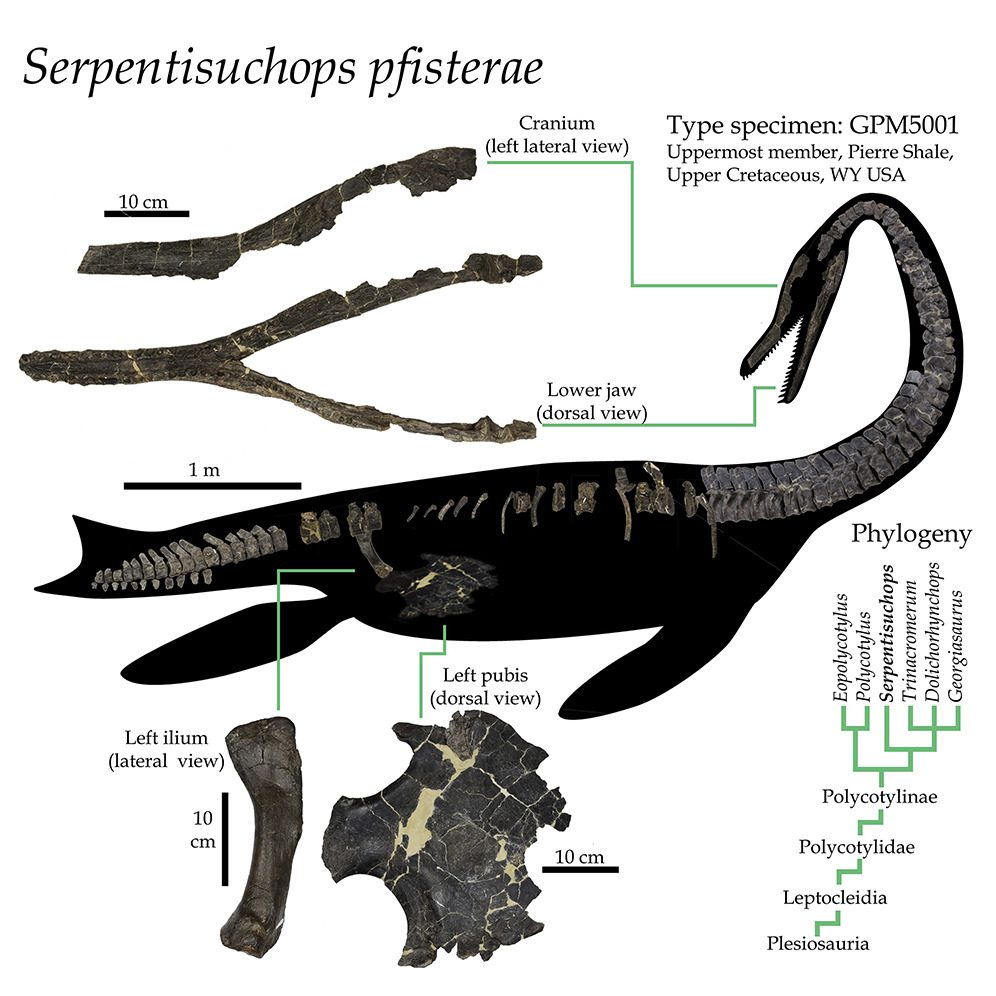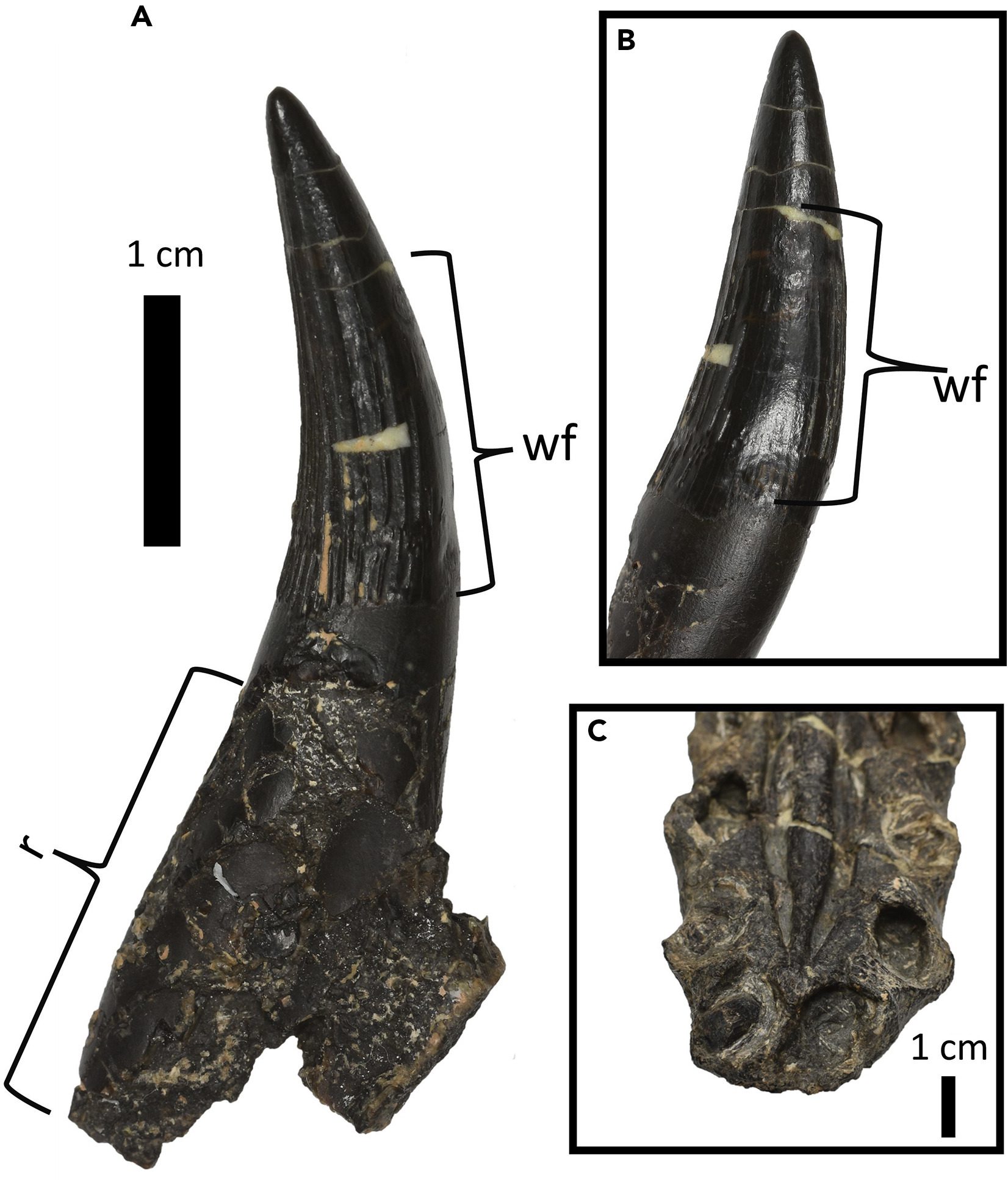Researchers have identified a brand new species of polycotylid plesiosaur and they’ve named it “snaky crocface”. Technically, the new species is called Serpentisuchops pfisterae but the translation to snaky crocface from the Latin and Greek is pretty accurate.
Despite misconceptions, plesiosaurs are not dinosaurs but marine reptiles. Most plesiosaurs fall into either the small head, short snout, and long neck category, or the large head, long snout, and short neck category. Snaky crocface is unusual in that it has both a long, snaky neck and large, croc-like, elongated jaws, whereas previous fossil finds have typically had one or the other.
The parts of the skeleton that the researchers have been studying indicate that the creature was over 7 meters (23 feet) long with a neck consisting of 32 vertebrae. Serpentisuchops pfisterae is from the Upper Cretaceous Pierre Shale of Wyoming and dates back to between 66 and 100 million years ago. The oldest plesiosaur specimen ever found dated back to the Triassic 251 to 199 million years ago.
The remains of the plesiosaur have actually been on display at the Glenrock Paleontological Museum for more than 25 years since it was discovered in 1995.

Serpentisuchops pfisterae. Image Credit: Persons et al., Science (2022)
The team have also been studying the creature’s teeth, 19 of which were found at the site, with one single complete tooth still preserved within its socket in the jaw of the plesiosaur. They suggest that the spacing of the teeth within the jaws implies that the teeth of the lower and upper jaw were tightly interlocked when the mouth was closed.
The team also think the large elongated jaws would have held 36 teeth that were not serrated and therefore not used for biting through bones, suggesting that the plesiosaur had a more piscivorous diet likely eating the small fish and cephalopods of the Western Interior Seaway. The researchers further suggest that snaky crocface lived up to its name, undulating through the water and moving its neck from side to side to grab its prey.

The most complete and best-preserved tooth and (B) details of the worn surface. Image Credit: Persons, et al., iScience (2022)
While about 35 percent of the animal’s body is preserved the missing pieces include the limbs and pectoral girdle, which connects the upper limbs to the skeleton.
There is much debate surrounding plesiosaur swimming style, with some experts suggesting that the animals used a rowing motion, while other work suggests a penguin-like subaqueous flight style was their method of locomotion.
The paper is published in iScience.
Source Link: Meet Snaky McCrocface (We're Only Half Kidding)